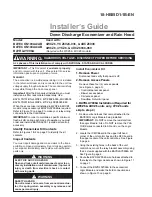
Instruction
Manual
DataVS1
Series
57
Parameters:
Min edges Expected
This allows you to specify the minimum number of detectable edges.
Max. edges Expected
This allows you to specify the maximum number of detectable edges.
Sensitivity
This represents the sensitivity level, that is the level of edge detection precision. Set sensitivity
affects processing results; the lower the sensitivity, the greater the accuracy, hence, the more
edges will be found.
Variation type
This establishes how the edge is to be detected during image acquisition. Possible values are:
From white to black: an edge feature is detected when a variation from white to black is
detected;
From black to white: an edge feature is detected when a variation from black to white is
detected;
Both: a feature is indicated as an edge feature when it changes from white to black and
black to white;
Automatic: the system automatically detects the edge features.
Noise reject
This is used to reduce noise during the edge detection process. The threshold is a function of the
first derivative and establishes the minimum brightness variation for a point to be considered as
an edge point;
Direction
This determines the direction and edge detection path inside the ROI. This can be one of four
values:
From left to right (default value);
From right to left;
From top to bottom;
From bottom to top.
Result
If the number of detected edges is between the minimum and maximum values set by the user,
the control gives a positive result. On the contrary, the result will be negative.
Example
Let's add a "count" control to the current inspection tool, so we can check that all three medicine
phials are present.
Let's select "Edge Count" from the Controls menu and then press the
SET
button.
















































